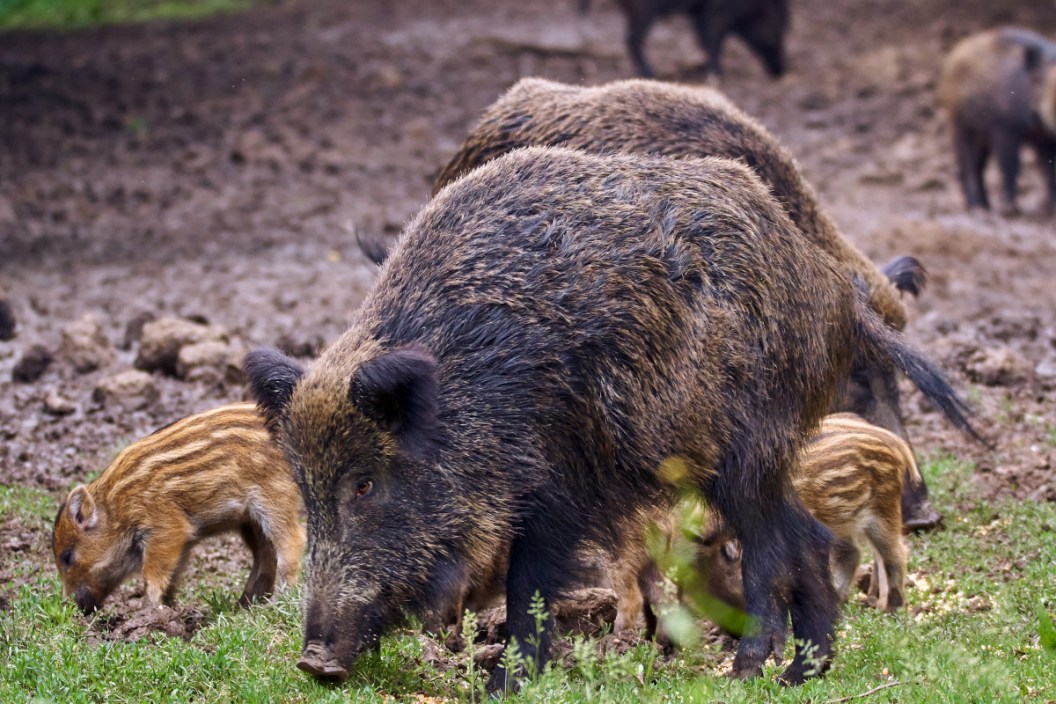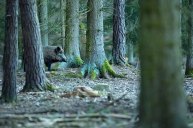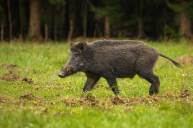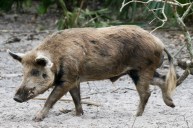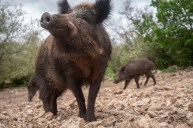How "Super Pigs" can make the feral hog problem worse.
Feral hogs are a huge problem here in the United States. Especially for states like Texas, which is home to over 1.5 million of the animals according to Texas Parks and Wildlife, and that number growing every day. Hunters have been advised that seven out of every 10 hogs must be killed just to keep levels in the Lone Star state level. Now experts are warning that exploding numbers coupled with "super pigs" may make the situation worse across other parts of North America.
The new warnings stem out of a story from The Atlantic warning about the "feral swine bomb" created by the animal's ability to reproduce piglets faster than hunters can eliminate them.
Dale Nolte of the U.S. Department of Agriculture' and manager of the National Feral Swine Damage Management program told the publication that the situation is rapidly growing out of control for many areas.
"To go from a thousand to two thousand, it's not a big deal," Nolte told reporters at The Atlantic. "But if you've got a million, it doesn't take long to get to four, and then eight million."
Most farmers and hunters already know what a big deal exploding pig populations are. However, the dangers of this invasive species are just starting to be picked up by major news outlets. In addition to damaging crops and native wildlife species, some pigs carry bacterial diseases and some have even attacked and killed humans in extreme cases.
It's not just Texas that is at risk. Canada is starting to see wild hog problems in parts of Ontario. Biologists are worried about the consequences these animals will have not just for Canada, but for other parts of North America too. In the same interview with The Atlantic, University of Saskatchewan biologist Ryan Brook says so-called "super pigs" or hybrids, are an entirely new type of threat.
The hybrids he's talking about are a mix of European wild boar and domestic pigs. More specifically, it is the fact that humans bred domestic pigs to breed year-round that causes a problem. It results in hybrids capable of producing multiple litters of 10 or more piglets a year. After a while, it gets difficult for humans to keep up.
"The problem with hybrids is you get all of the massive benefits of all that genetics," Brooks told The Atlantic. "It creates what we'd call super-pigs."
So, what else makes a "super pig" super? Well, aside from being able to produce large litters quickly and more often, these feral pigs are tougher. They have heavy fur that makes them more adaptive to a wide range of climates. It also makes them tougher to bring down with bullets and arrows.
The animals also have larger tusks that can cause greater damage and just grow to a larger size overall. Experts say super pigs are also larger. Texas alone has seen not one, but at least two feral hog specimens over 400 pounds killed by hunters in 2020. In one of those instances, the giant hog had been terrorizing the farm for months before a professional hunter's teenage son shot the animal.
The Atlantic's report says problems with wild pigs have gotten worse with some hunters importing the animals to areas they previously did not reside like Montana. Even if they are placed into high-fence preserves, escapes are not uncommon. The Atlantic reports Montana cracked down hard to early pig reports and has since banned transplanting, hunting or owning any sort of feral pig.
Right now, the experts advise that the best course of action is to stomp out populations before they can gain a foothold. Some states and provinces are establishing websites and hotlines for the public to report sightings so authorities can deal with them before the situation gets worse.
For more outdoor content from Travis Smola, be sure to follow him on Twitter and check out his Geocaching and Outdoors with Travis YouTube channels.
NEXT: THE AXIS DEER AND HOW THEY'RE IMPACTING PARTS OF THE UNITED STATES
WATCH
